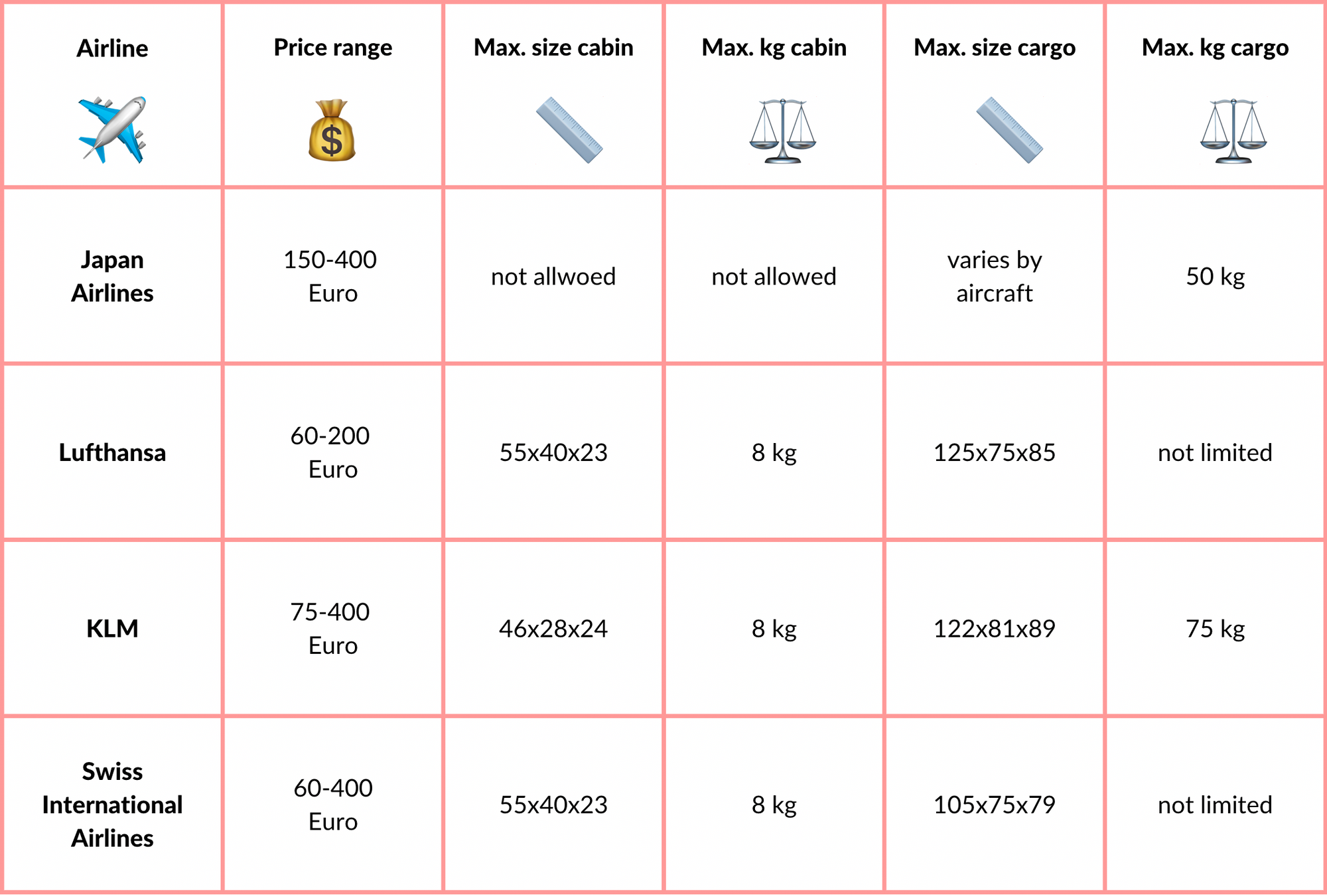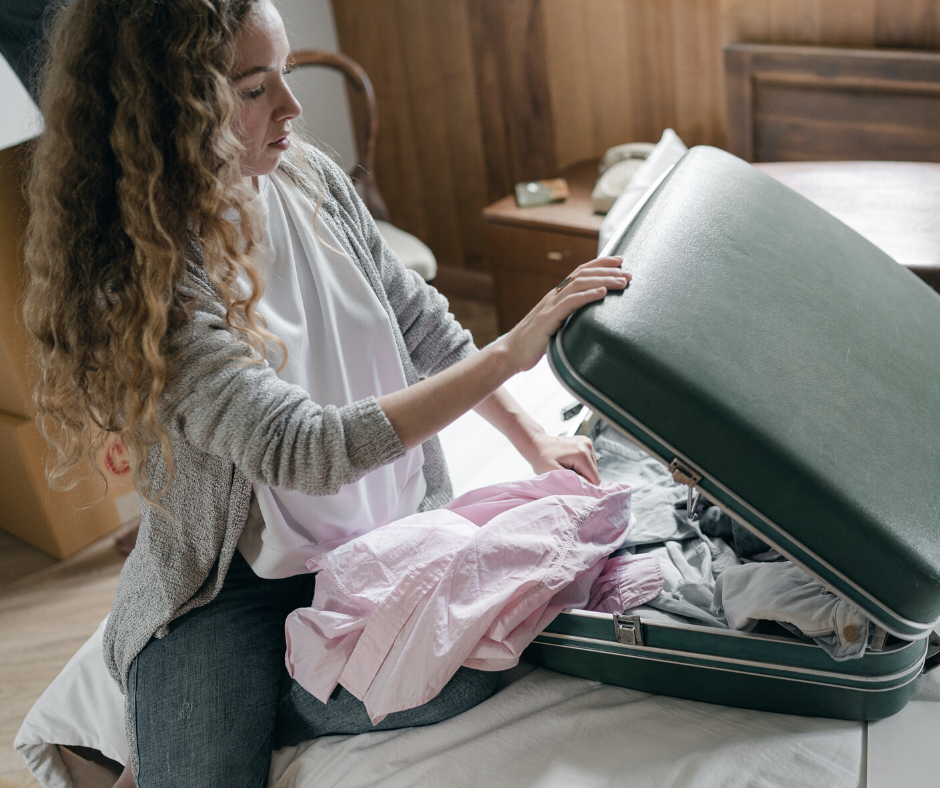Whether you travel with your beloved dog or you rescue a dog abroad and want to bring it to your home country, there are many challenges to overcome when traveling with dogs. We do not encourage you to fly with your dog for unnecessary reasons, short distances, or frequent. It causes emotional stress, especially when the animal travels intercontinental and is stored in life cargo.
This article gives information and resources on the process of traveling with your dog.
🌱 Travel health insurance for digital nomads
🐶 Considerations
Ask yourself the following questions before traveling with the dog.
- Is the trip necessary for the dog?
- What might be the least stressful way to travel with your dog and which options (plane, train, car, ferry) do you have?
- How stress-resistant is your dog?
- How healthy is your dog? How likely is it that your dog survives the flight?
✏️ Procedure breakdown
- Pet passport: Get your dog a vaccine book and document all vaccines and treatments it has received. This should be done by the veterinarian.
- Vaccine: Check the mandatory vaccines and treatments required to bring the dog to the final destination. Additionally, check the treatment and vaccine requirements for the transit destinations and the airline.
For example, when rescuing a dog from Asia, the dog needs to have the Rabies vaccine to exit the country and enter the new destination. If you want to bring it to the USA, no Rabies titer test (different from the Rabies vaccine) is required. But if you want to bring your dog from Asia to Germany, you need a Rabies titer test which is a 3-month procedure. If you don’t have 3 months, it is possible to bring your dog from Asia via the USA to Germany without a Rabies titer test. - Travel documents: What travel documents are required to leave the current country and enter the transit country and the final destination? When traveling in a car across Europe, make sure your dog has an EU pet passport.
- Transport box: If you fly with an airline that is a IATA member, check the IATA requirements for cannel transport boxes. For Skyteam member airlines, please check Skyteam requirements. In general, the animal must be able to stand in the crate and be able to turn around easily.
- Flight booking: You need to book your flight before booking your dog as your booking number is required. However, call the airline first and ensure availability for your dog.
✈️ Booking your dog on a flight
Make sure to research the best possible airline when traveling with your dog. The best airlines for pet travel are Japan Airways, Lufthansa, KLM, and Swiss International Airlines.

Dogs traveling in life cargo
- Call the airline and check availability. Also, make sure you meet the requirements for the permitted breed (short-nose dog breeds, such as french bulldogs or pugs are likely not allowed to fly), the size and weight of your dog, the size and weight of the transport box, the destination, and transit countries.
- Book your flight.
- Call the airline again and book your dog by using your booking number.
Dogs traveling in the cabin
- Dogs and other pets such as cats, under a weight of 8kg (including transport box) are allowed to travel in the cabin of most airlines.
- The transport container has to be locked for the whole duration of the flight.
- The transport container must be stowed under your seat during take-off, landing, and during turbulence.
🍖 Preparation before the flight
- Get the transport box a few weeks before the flight and help your dog to get used to the box. Do not force the dog into the crate but place some treats inside and make it cozy, so it enters by itself.
- If possible, travel with your dog one or two times before the actual flight by using the transport box. Use the transport box to go with your dog to the beach or a positive destination (do not use it to go with your dog to the vet). Help your dog to have positive experiences when traveling in the crate.
- On the day before the flight, do not feed the dog the normal size of meal. As it probably won’t use the transport box as a toilet, it is better to have a light and small meal before the flight. However, you are allowed to put treats in the crate. Some people use ice cubes and place them in a bowl inside the crate, so the dog has water once it melts. You can not place a bowl with water inside the crate when checking in, and after, there is no possibility of accessing the crate if the crate travels in life cargo.
- Take your dog for a long walk before the flight, especially if it is a long intercontinental flight in transit.
Please be aware that if you have a long intercontinental flight with a transit booked, your dog is not allowed to leave the cargo zone. You will not be able to visit your dog or take it on a walk. Choose shorter transits to reduce the stress for the animal.
📦 IATA requirements for the cargo transport box
- Your dog should be able to stand without its head touching the roof, and it must be able to turn around and lie down comfortably.
- The kennel should have fiberglass or a rigid plastic shell as well as ventilation on all four sites.
- Wheels on the kennel should be removed or blocked with duct tape.
- The door should have a centralized locking system that fastens both locks on top and at the bottom of the door. The hinge and locking pins should extend beyond the horizontal extrusions above and below the door opening by at least 1.6 cm.
- The box must be secured with screws. A plastic locking mechanism is not considered to be a secure method of fastening and will not be accepted.
- The kennel needs to be rigid enough to prevent your dog from escaping through gaps at the seams or joints. If the box consists of more than one part, make sure they’re joined by bolts. Other lateral closing systems are not allowed.
- The kennel should have either two empty containers or one food bowl with two empty compartments for food and water. These have to be sealed or attached to the kennel and need to be fillable from the outside.
- There should be a blanket, newspaper, or other absorbent material on the bottom of the kennel. Note that straw is prohibited.
- Attach a label inside and outside the kennel with your name, contact details, destination as well as the dog's name.
🚦Specific territorial regulations
Do note that every country has its own set of requirements when it comes to traveling with animals. Find here some general territorial information.
- Europe: For transport within Europe, or entering Europe from a third country, your pet has to have an (EU)-passport, which documents vaccinations, a European Health Certificate, and a microchip or tattoo code.
- United States: The US prohibited entering pets from the countries listed here due to a high risk of importing dog rabies.
- Canada: You can enter the territory of Canada with your dog if you have either an EU pet passport or a Rabies Vaccination Certificate. The pet does not need a microchip or tattoo.
- South Africa: If you want to enter South Africa with your pet, it is only allowed via cargo. The country also doesn't accept tattoos, meaning your pet has to have a microchip. Within the last 30 days, the pet has to pass a blood test and rabies vaccination. Further needed Documents are a Health Certificate and an Import permit. Depending on the country you are coming from, your dog might have to quarantine for 14 days.








